Crepe chiffon: description and composition of the material

In the winter cold, everyone wraps themselves in warm clothes, waiting for the onset of warmth. With the arrival of spring, I want to quickly put on light flowing dresses, wear thin blouses, weightless sundresses. Crepe-chiffon fabric is perfect for sewing light clothes.
Beautiful dresses with elegant flounces and draperies, sewn from this fabric, will help make any fashionista simply irresistible. What is crepe-chiffon, what features does it have, how comfortable is the fabric to wear? Is it easy to care for products made from this fabric?
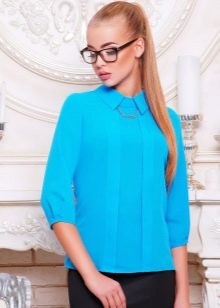
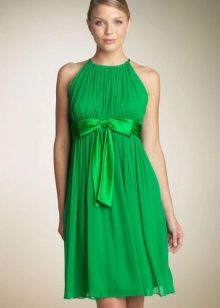
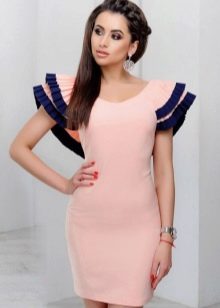
Material description
When you visit a fabric store, your eyes run up, how big the choice is. Among this variety, it is difficult not to mention crepe-chiffon. This material is opaque, in what way it differs from the usual chiffon, it has a granular structure. The difference between crepe chiffon and chiffon is in the textured surface and density. Translated from French, the word "crepe" means "twisting". A canvas is created by twisting the weft and warp threads very tightly in different directions. With a thread length of 1 meter, about 3 thousand revolutions are made. After the fabric is created, it is exposed to a high temperature, resulting in a graininess of the fabric.
It is one of the most demanded sewing materials today. Women's clothing is sewn from it, used for decoration. Crepe chiffon bows, flounces, cuffs and frills will look great. Usually it is a solid material of different colors. To create a spectacular image, a pattern is stuffed onto the canvas, which makes the product more elegant. Its surface is matte, but if the material is sprayed, then it has a pleasant shine. Bleached material is difficult to find.
The material drapes very well, so it is chosen for the decoration of small details, draperies.
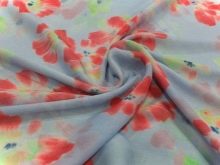
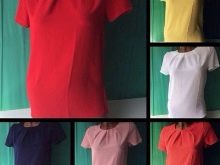

When choosing this material, remember that it may shrink slightly after washing. To give the fiber a shiny appearance, mercerization is carried out. Due to this, the fading of the fabric is reduced, the original color is enhanced, and the hygroscopicity and strength of the fabric is increased. After carrying out the mercerizing process, the fabric becomes outwardly more attractive and is distinguished by extraordinary softness. At the same time, the material becomes easier to maintain and operate. It should be noted that this technology is quite expensive, therefore it is more often used for elite and expensive fabrics.
Crepe-chiffon does not stretch well, while mercerization affects only the density of the fabric and its color. The peculiarity of this material is that it is two-sided. That is, both sides of it look exactly the same. This feature is used by designers when sewing products, since it can be worn both on the front and on the seamy side. The fabric is rough to the touch, but pleasant to the body.
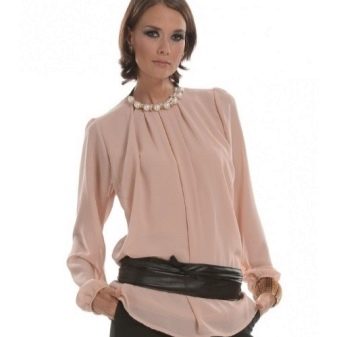
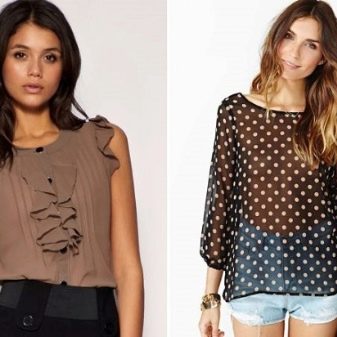
According to the standards, the material should contain natural silk, but there may be crepe-chiffon made of artificial silk and other additions. Silk may be present in varying proportions, as well as mercerized cotton, rayon, polyester or polyamide. The price depends on the composition of the fabric. When replacing silk with synthetics, the price of the product will be much lower. This material is very popular, because it can be used to sew things that are worn all year round. Such clothes are worn in the form of a festive outfit, as everyday clothes.
There are several types of this material:
- with spraying;
- with the addition of lurex;
- bleached.
Crepe-chiffon can be combined with fabrics that are similar in structure, as well as opposite in appearance. For example, the material will look great in combination with both fur, leather and knitwear. As an evening option, a combination of material with satin looks great, and a combination with linen, cotton, denim is suitable for everyday wear. Crepe-chiffon does not stretch, since its threads are twisted very tightly, therefore, the matter comes out dense and inelastic.
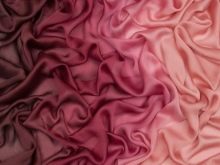
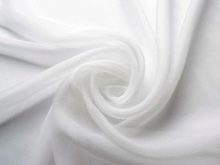

Where is used
This lightweight material is usually chosen for sewing airy outfits. Often blouses, light summer sundresses and dresses, skirts are sewn from it. The material is very suitable for finishing these products. Flounces, ruffles and cuffs on products will look great. Choosing crepe-chiffon for sewing concert costumes. It will make excellent options for outfits for oriental dances, masquerade costumes, costumes for circus artists.
The fabric is very pleasant to the touch, light and airy, sliding between the fingers. In the process of working with this material, they take the thinnest needles and threads, make many stitches. Cutting this fabric is not very convenient, as the material glides, however, the result is worth it. Basically, the material is used for sewing and decorating clothes. Crepe chiffon does not deform and does not allow moisture to pass through, therefore it is used in cosmetology, shipbuilding and other industrial areas.
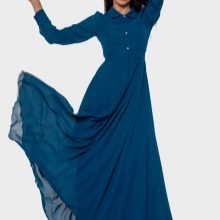
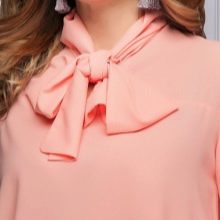
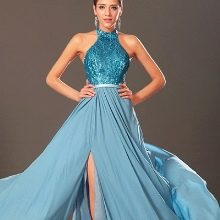
Benefits of fabric
This material looks very impressive. Crepe chiffon is hugely popular with buyers for good reason.
- Very pleasant to the touch, no skin irritation when worn.
- The canvas is quite dense, although airy. The fabric does not show through.
- The material is strong, resistant to any damage. It will not tear at the seam or during mechanical stress.
- It has a granular structure, double-sided, does not fade, does not fade when washed.
- Has many colors, various prints are possible.

disadvantages
If we talk about the shortcomings of the material, then there are very few of them.
- When processing, the crepe-chiffon slips, which makes it difficult to work. When working with this material, you will need special clamps to hold the fabric in place.
- Shrinkage is possible when washing the product.
- For things, additional care is required if the material contains silk fibers.
- The material does not tolerate exposure to sunlight very well, for example, during prolonged drying in the sun.
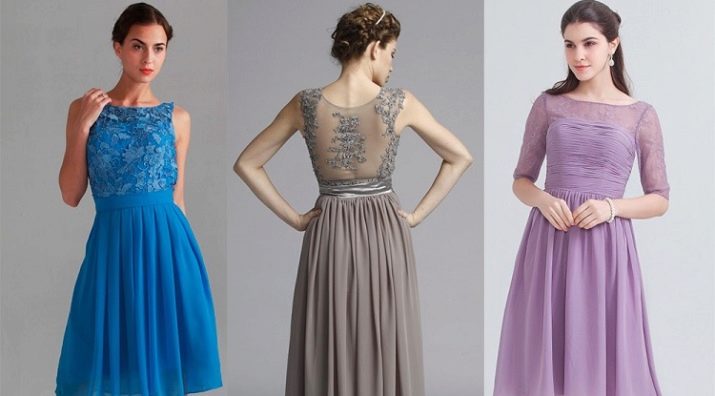
Fabric care
For a thing to serve for a long time, it is important to know how to properly care for it. It is better to dry-clean or hand wash things made of crepe-chiffon. When washing, you need to adhere to the rules for delicate washing of products: wash things at a temperature of up to 30 degrees;
- do not wash colored and white products together;
- after washing, it is better not to wring out the things, but simply shake them and carefully lay them out;
- it is not recommended to rub the products, otherwise the fibers may be damaged;
- no bleach is added to the water.
To prevent the products from losing their shape and deformation, they are dried after washing on a horizontal surface. To do this, put a terry towel on a table or other surface and lay a damp product on it. Thanks to the terry towel pad, the fabric dries faster, as the towel wicks away excess moisture. If after washing the fabric has become faded and discolored, you can restore it. To do this, when rinsing the product, add a spoonful of vinegar to the water.
Avoid adding a lot of vinegar, as the result may be completely opposite and the fabric will become less resistant to wear and tear.
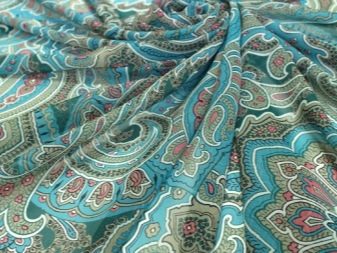
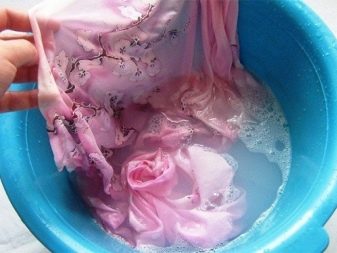
Since the material is almost not wrinkled, you do not need to iron it. If ironing is necessary, for example, with creases, it should be done with caution. For this, the iron is set to the "click" mode. It is necessary to check how warm the iron is, otherwise tan marks may appear. In order for the fabric to serve as long as possible, it is recommended to iron it through cheesecloth, while it should not be wetted. In the warm season, it is better to choose crepe-chiffon products that contain silk, and not synthetic fibers. Although such fabric will cost more, but on a hot day it will be cool and will not stick to the body.
The material is difficult to care for, and it is not entirely easy to sew products from it, however, the advantages overlap these small disadvantages. Every fashionista strives to have things made from crepe-chiffon in her wardrobe.
With these airy outfits with beautiful drapery and ruffles, you can be irresistible at any time. Flowing fabric with flounces will help hide figure flaws, make it more graceful, and emphasize its merits.
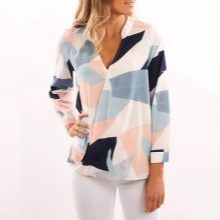
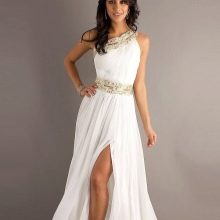
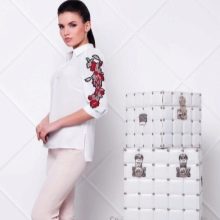
Advice
When choosing crepe chiffon products, you need to know the features of the material. Since the fabric can shrink after washing, it is better to give preference to the larger size. Moreover, it is not a stretch fabric, it does not stretch. The fabric shrinks even after washing the garment in cold water. It depends on the composition of the material whether it is necessary to wait for a similar effect. The more in the composition of natural silk, the greater the shrinkage of the product. The style of the dress is very important. You should choose a style that leaves a few centimeters in the chest. If the product is larger than the required size in the hips, it can be sutured. But you can not do this, since the fabric is flowing, and the extra space will not be noticeable.
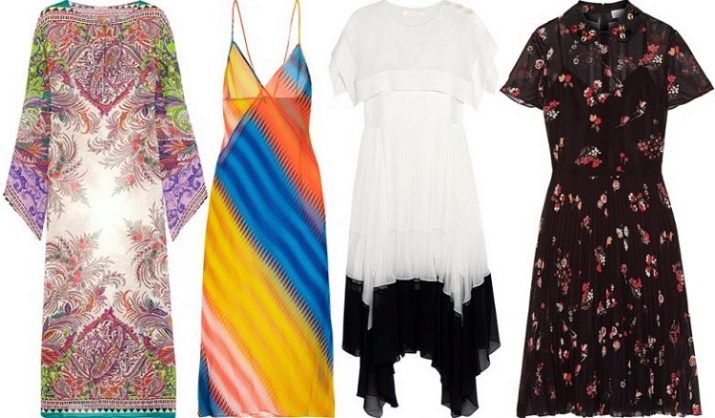
This material is very delicate, transparent and airy. When sewing skirts, it is better to take care of a double layer of the product or wear a combination. Beautiful and light crepe-chiffon products will make the image romantic and emphasize the femininity of the figure. Dresses made of this fabric will fit well on any figure. This fabric is suitable for both skinny and curvy women.
For information on how to work with chiffon, see the next video.








